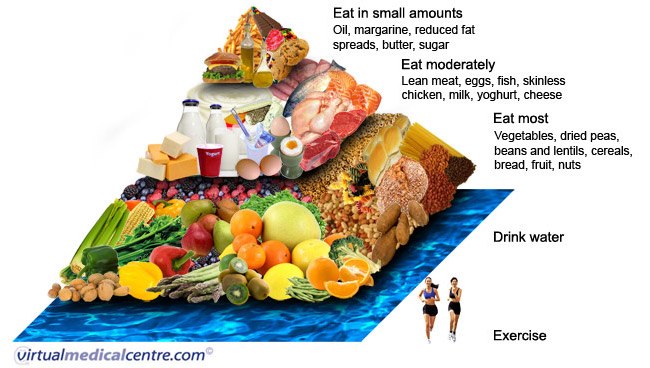Introduction
Between the age of 12 and 24 months, most of the baby teeth come through into the mouth. As the toddler is introduced to a variety of new foods, healthy meal and snack patterns should be exercised routinely by the parent or guardian. Variety, moderation, and attention to what is eaten by the child for snacks are of crucial importance.
During the toddler years, there is a great development in the ability to eat, have control over their hands and fingers and since there are teeth present in the toddler’s mouth, the toddler can control more of what he/she eats.
Snacks
Nutritious finger foods such as cheese and fruit should be offered as snacks. Frequent snacks that increase the risk of tooth decay considerably or continual sipping of liquids that increase the risk of decay place the toddler with a very high chance of developing tooth decay, and needing fillings or possible removal of teeth in extreme cases.
The following table has three groups; the no risk categories are those foods that have essentially no contribution to decay; the low risk category has a mild effect on dental decay; and the high risk category plays a big role in dental decay if the teeth are not cleaned properly. Parents should of course concentrate on giving their children snacks from the first two columns.
| No risk | Low risk | High risk |
|---|---|---|
|
|
|
Main meals
In terms of children’s food intake, only 2% of children consume the recommended number of servings of foods in the food pyramid, and 11% do not meet any of the recommendations. This is a great concern as it means many children are not eating a nutritious diet, filled with a variety of food groups.
The rationale behind the food pyramid emphasises the need to include generous amounts of plant-based foods (cereals, legumes, fruits and vegetables) and moderate amounts of animal products (meat, fish, milk, eggs) in our diets. Furthermore, a healthy diet should contain only small amounts of energy-dense foods (e.g. sugar, fats and oils). The base of the pyramid is broad, and the top narrow; if food is selected according to the structure of the food pyramid, then the diet will most likely be healthy, thereby maintaining a stable healthy lifestyle.
Information on re-publishing of our images
High sugar intake
High sugar intake is also of concern to general as well as dental health because high sugar-containing foods are generally low in essential nutrients and may substitute for foods that are more nutritious. An example of this problem is the large consumption of juices by toddlers. Juice consumption has increased from an average of 95ml to 163 ml, and 11% of preschoolers consumed more than 355ml of juice daily. This high juice consumption, especially those high in sorbitol and fructose, can cause “toddlers’ diarrhoea”.
Additionally, sugar rich foods should be limited to mealtimes and should be followed by either toothbrushing or by consumption of protective foods such as cheese and milk.
Dental hygiene is of great importance at this age as many of the baby teeth come through into the mouth. It is important to take excellent care of these teeth, as decay at this stage will most likely result in the loss of teeth, and future problems with the adult teeth.
 |
For more information on dental hygiene from 12 to 18 months of age, see Dental Health for Babies and Young Children. |
 |
For more information on dental hygiene from 18 months of age, see Dental Health for Babies and Young Children. |
Summary
To promote good nutrition and decrease caries risk in toddlers:
- Don’t put a child to bed with a bottle;
- Complete weaning of infants from the bottle;
- Discourage a child from carrying and continuously drinking from a bottle or sippy cup;
- Limit juice or sugar-containing drink intake to about 120ml a day and only in a cup;
- Restrict sugar-rich foods to mealtimes;
- Establish routine meals with family members eating together; and
- Stimulate a child’s appetite at mealtimes by reducing between-meal snacking.
Kindly written by Dr Akhil Chandra BDSc. (Hons UWA)
Dentist, Whitfords Dental Centre and Editorial Advisory Board Member of the Virtual Dental Centre
More information
 |
For more information on dental health and hygiene in children aged 0 to 5 years, see Dental Health in Kids. |
References
- Proffit W. Contemporary Orthodontics. 3rd ed. St Louis: Mosby, Inc; 2000.
- Fitzsimons D, Dwyer JT, Palmer C, Boyd LD. Nutrition and oral health guidelines for pregnant women, infants, and children. J Am Diet Assoc. 1998 Feb;98(2):182-6, 9.
- Tinanoff N, Palmer CA. Dietary determinants of dental caries and dietary recommendations for preschool children. J Public Health Dent. 2000 Summer;60(3):197-206; discussion 7-9.
- Tinanoff N. Association of diet with dental caries in preschool children. Dent Clin North Am. 2005 Oct;49(4):725-37.
- United States Department of Agriculture, Centre for Suhition, Policy and Promotion, 1999. Available from: URL link
- Dennison BA. Fruit juice consumption by infants and children: a review. J Am Coll Nutr. 1996 Oct;15(5 Suppl):4S-11S.
All content and media on the HealthEngine Blog is created and published online for informational purposes only. It is not intended to be a substitute for professional medical advice and should not be relied on as health or personal advice. Always seek the guidance of your doctor or other qualified health professional with any questions you may have regarding your health or a medical condition. Never disregard the advice of a medical professional, or delay in seeking it because of something you have read on this Website. If you think you may have a medical emergency, call your doctor, go to the nearest hospital emergency department, or call the emergency services immediately.








